As part of its Computex 2025 announcements, AMD has given gamers a sneak peek at the company's major update for its FidelityFX Super Resolution (FSR) technology. Dubbed FSR Redstone, the upcoming installment will bring many new features to match rival Nvidia's Deep Learning Super Sampling (DLSS).
FSR 4, the latest iteration of the technology, debuted a few months ago with the launch of the Radeon RX 9700 series, specifically the Radeon RX 9070 and Radeon RX 9070 XT.
While the initial batch of supported titles was limited to around 30 games, AMD expects to double that number by June 5, aligning with the Radeon RX 9060 XT launch. Nonetheless, AMD is already plotting ahead and preparing FSR Redstone as the next substantial upgrade for FSR.
Although AMD did not provide specific details, the chipmaker emphasized three features to be included in FSR Redstone: neural radiance caching, machine learning ray regeneration, and machine learning frame generation. Some of these features might sound familiar, as they are already part of the Nvidia DLSS suite.
AMD states that neural radiance caching effectively learns how light reflects within a scene. The objective is to predict and store indirect lighting assets in a cache, which can subsequently be used to generate heaps of other rays. Logically, this helps accelerate path tracing.
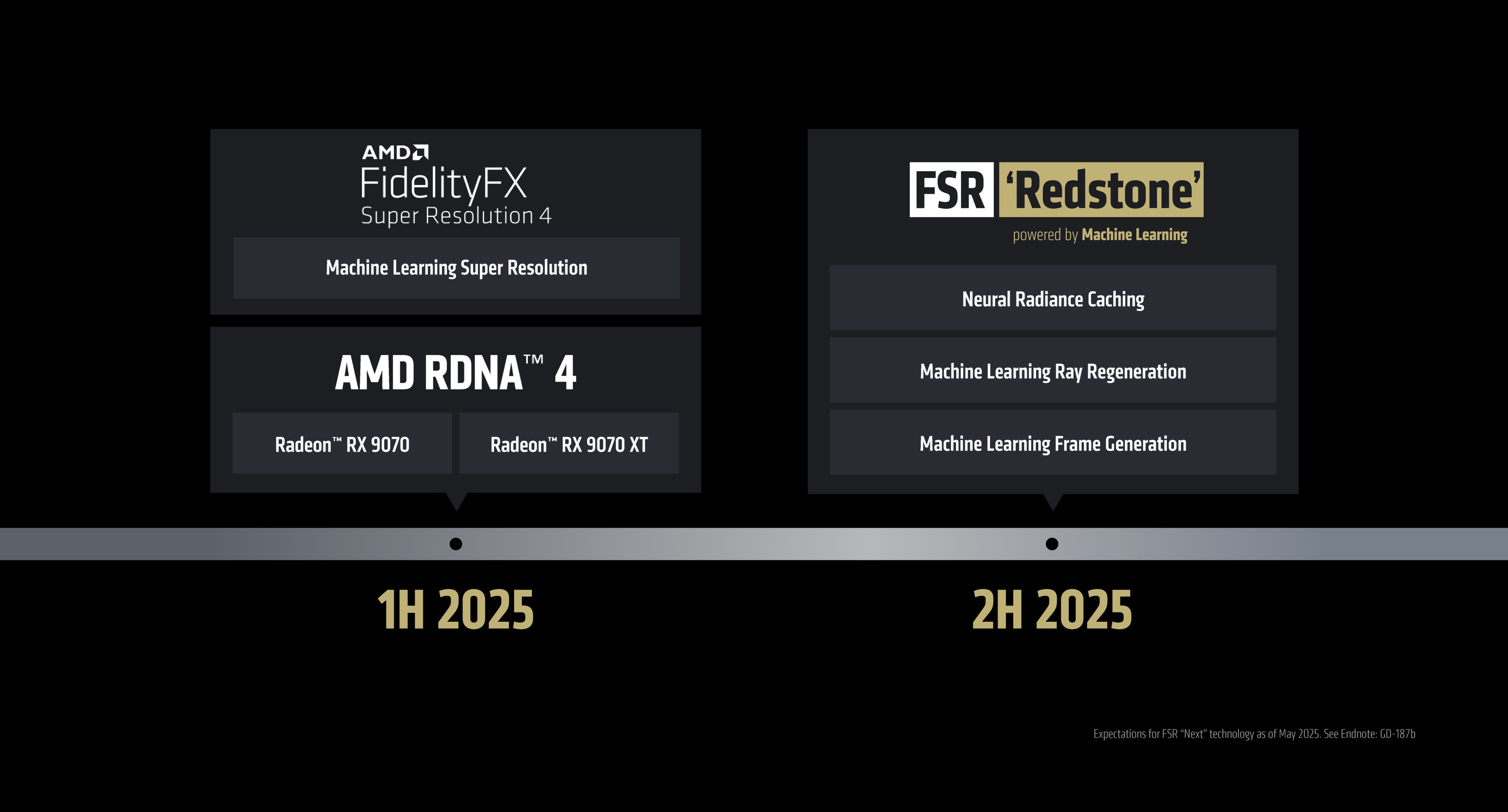
Ray regeneration is equivalent to Nvidia's ray reconstruction. This feature leverages a trained neural network to regenerate pixels that couldn't be accurately traced. Thanks to machine learning, it can predict and filter grainy noise in real time.
With FSR Redstone, AMD is enhancing its super resolution feature through the utilization of an improved machine learning model, designed to predict and reconstruct lower resolution frames in order to optimize performance. The upscaling occurs in real time.
Like Nvidia DLSS, AMD FSR also offers gamers frame generation. However, FSR had utilized an AI-free approach up until now. The next-generation FSR Redstone will tap machine learning for frame generation, which should improve performance and quality.
AMD has not committed to a specific date for FSR Redstone's prime debut, only indicating a release in the latter half of this year. FSR Redstone will launch with native compatibility for RDNA 4-powered graphics cards. Sadly, AMD did not specify whether it will be backward compatible with the previous generations of RDNA graphics cards. Since FSR 4 is exclusive to RDNA 4, FSR Redstone support for older-generation AMD Radeon graphics cards looks even bleak.
Follow Tom's Hardware on Google News to get our up-to-date news, analysis, and reviews in your feeds. Make sure to click the Follow button.

 6 months ago
86
6 months ago
86
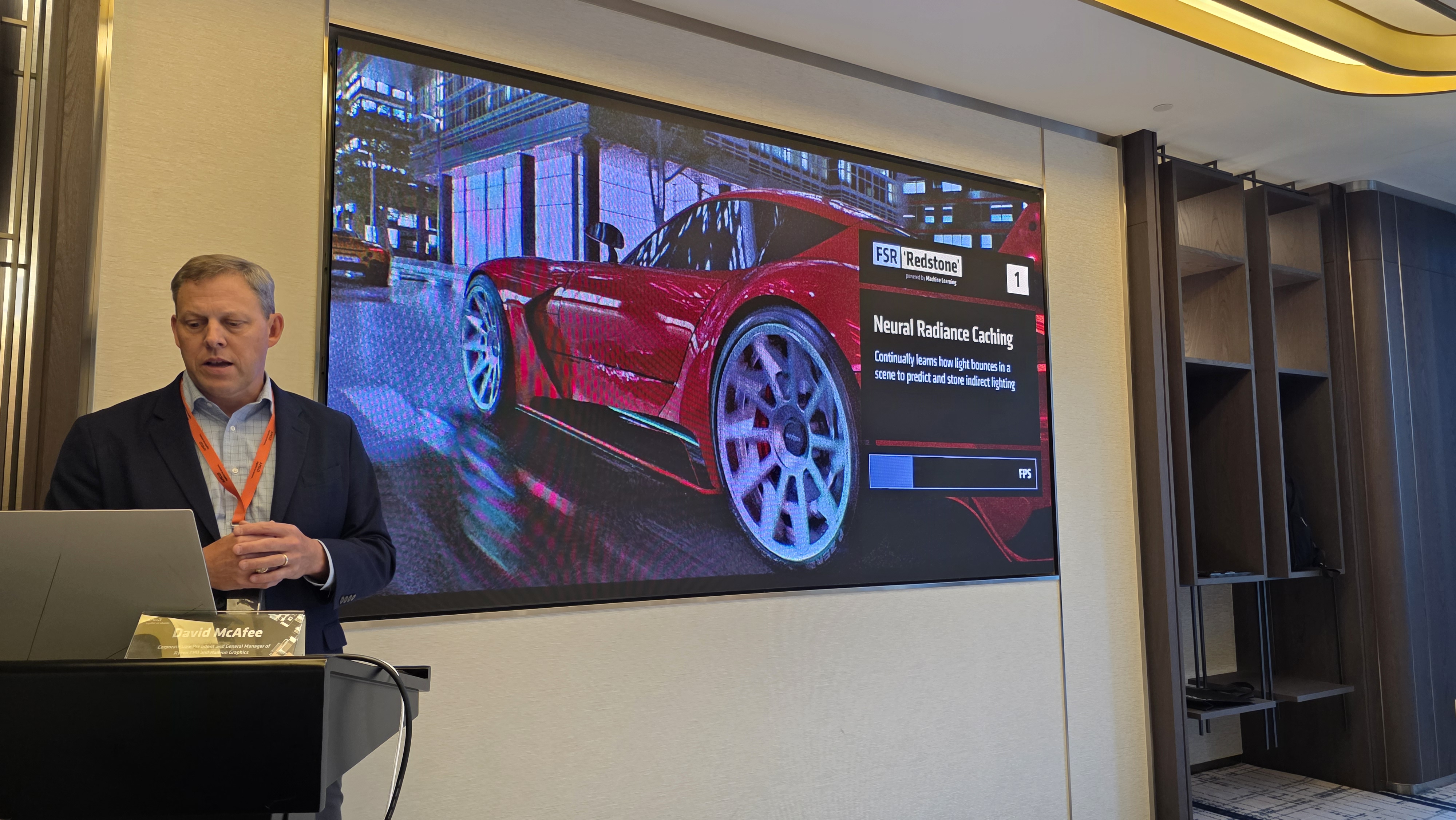
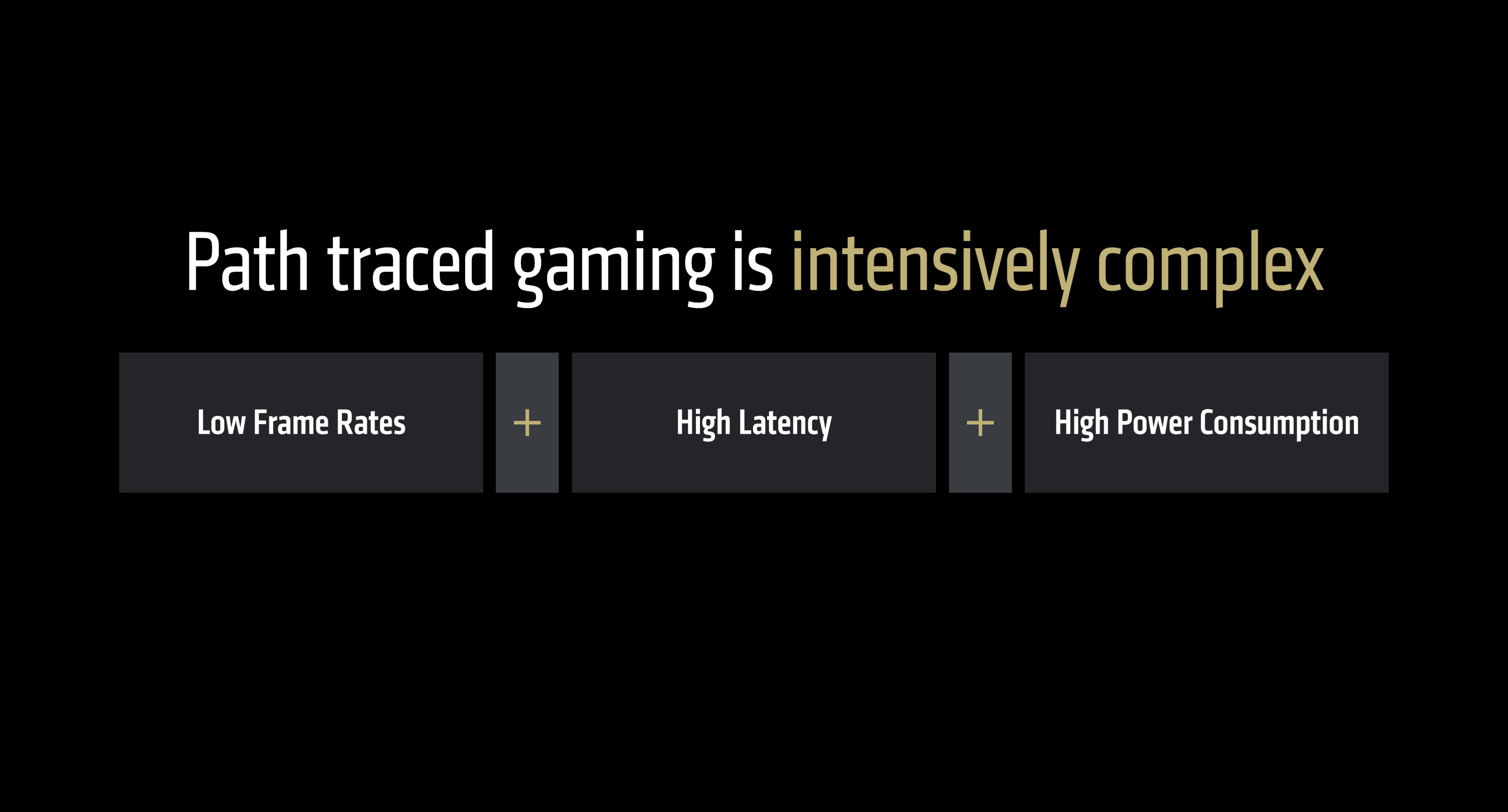

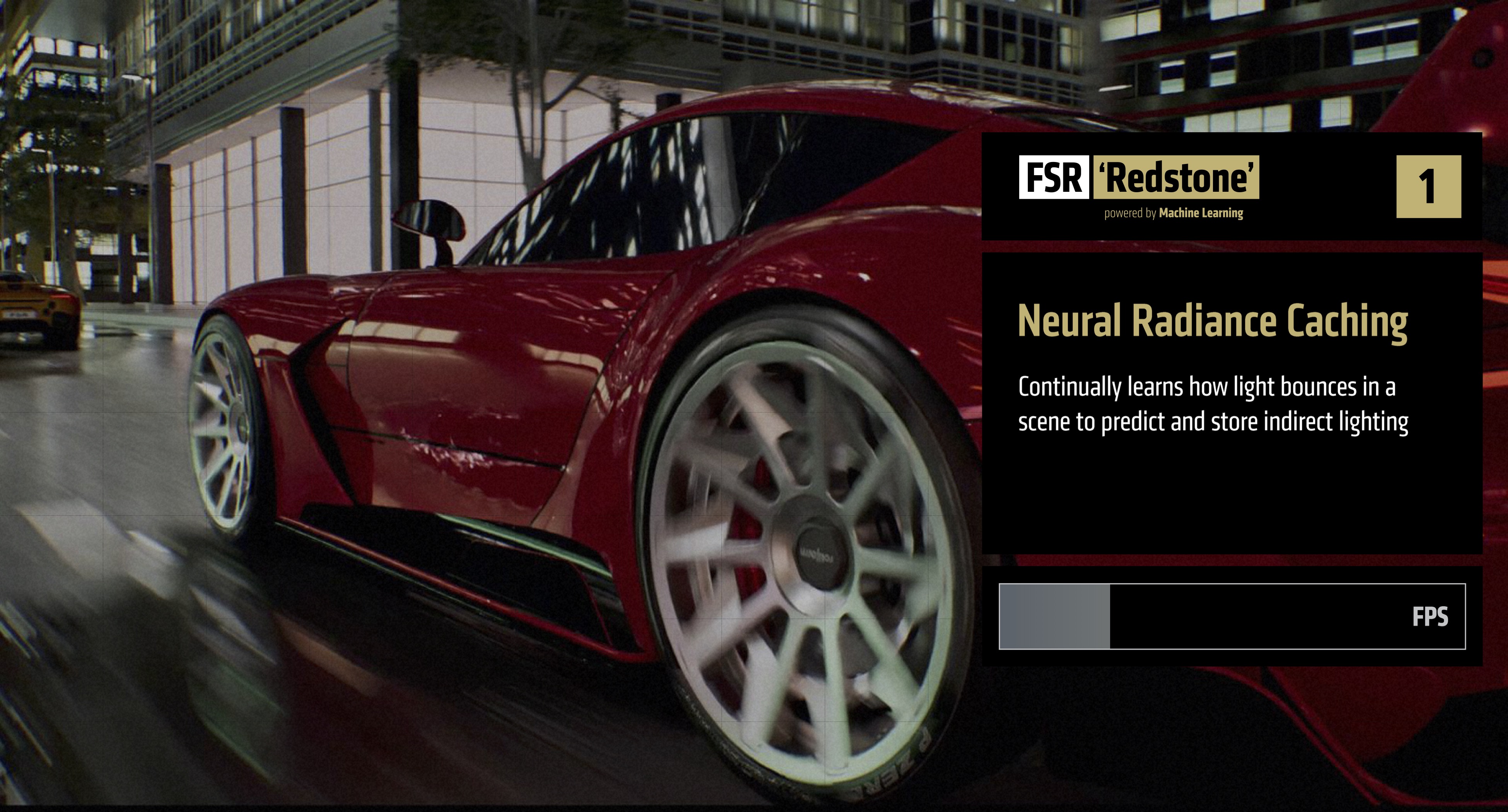
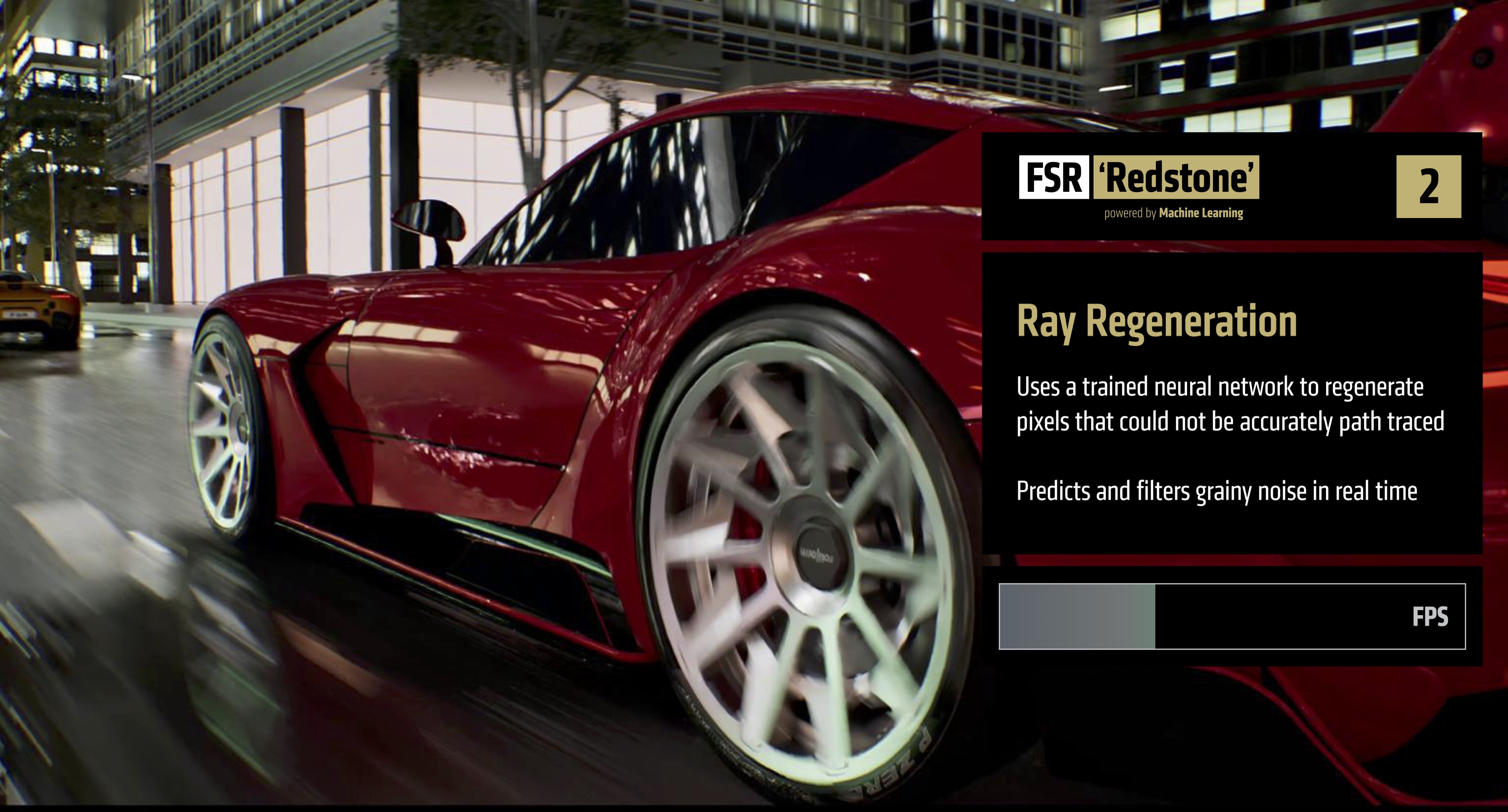
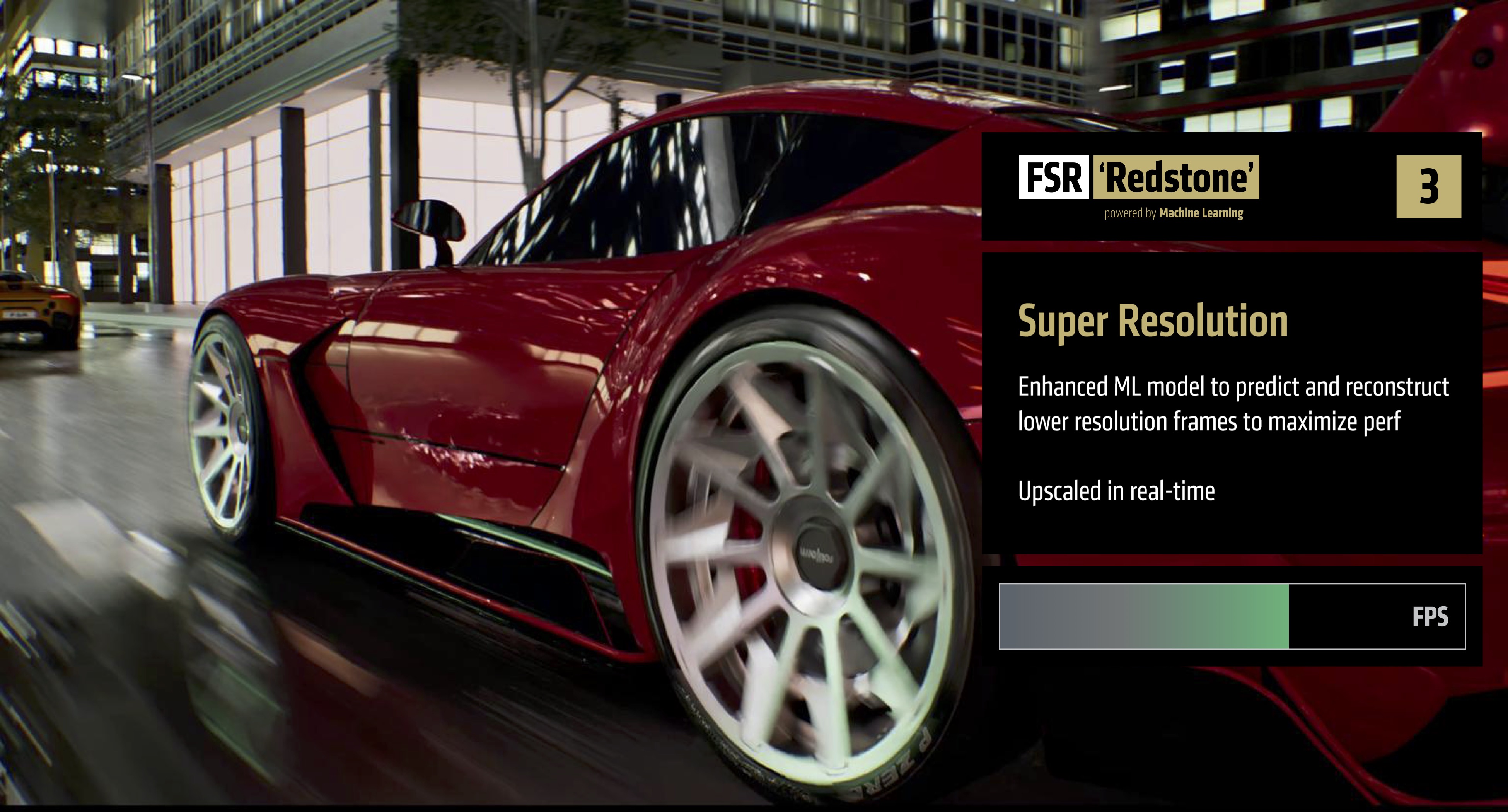
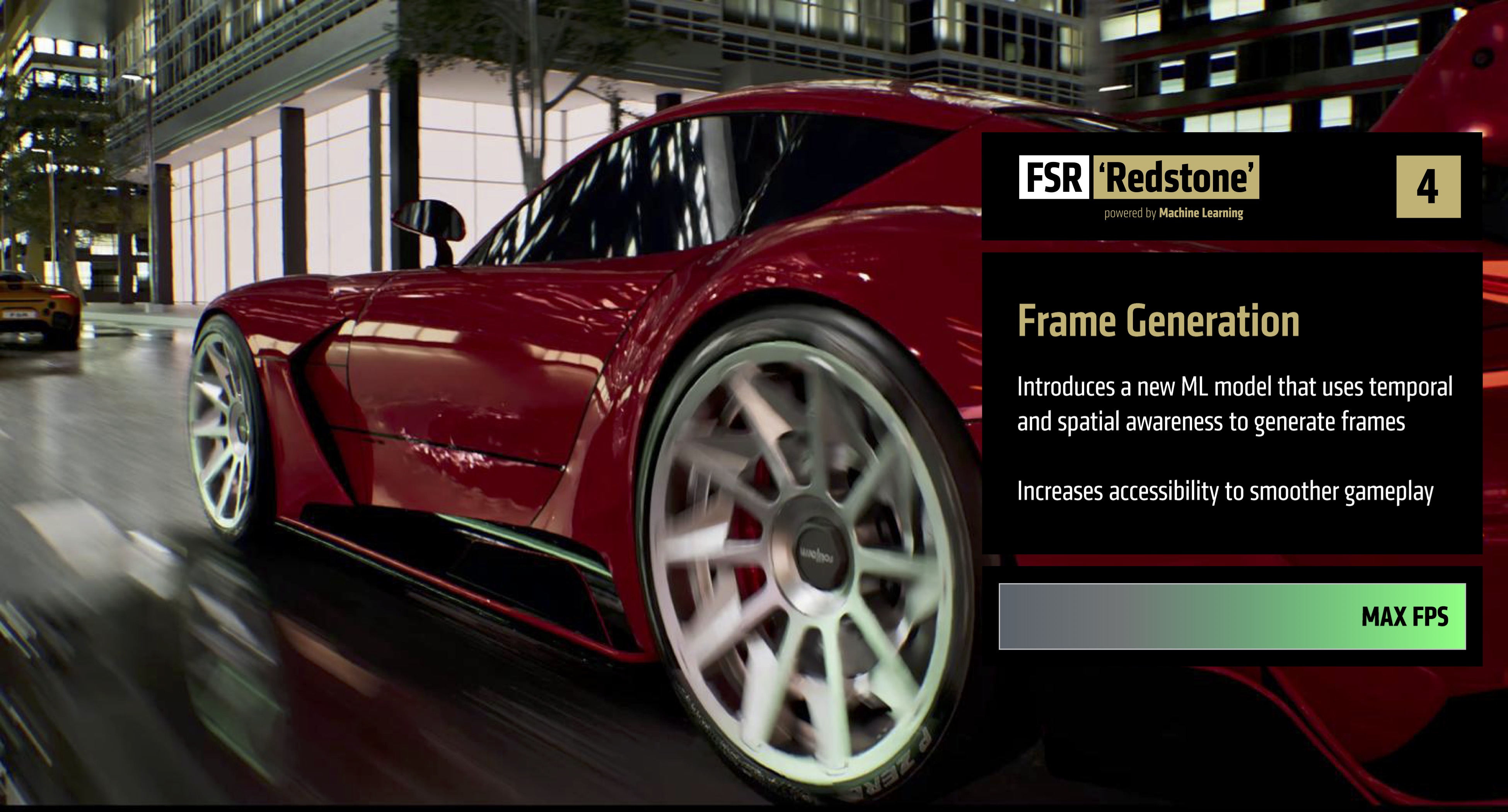
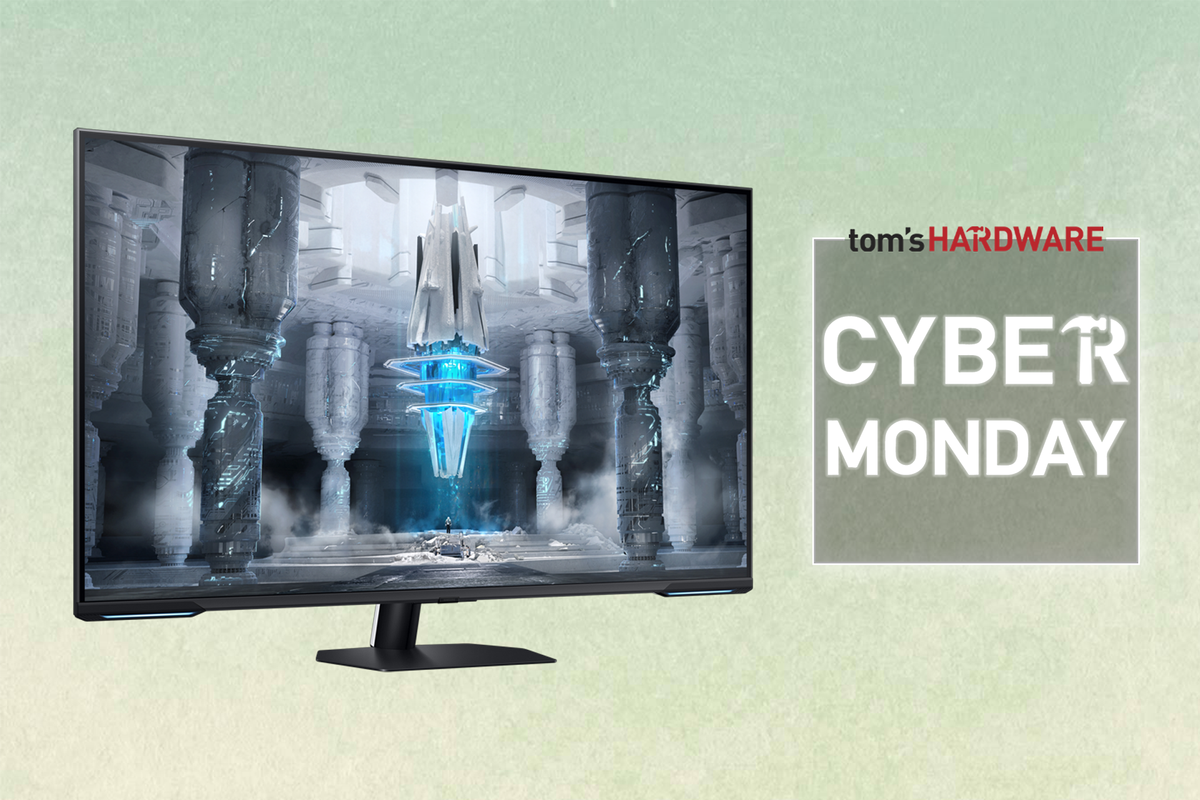
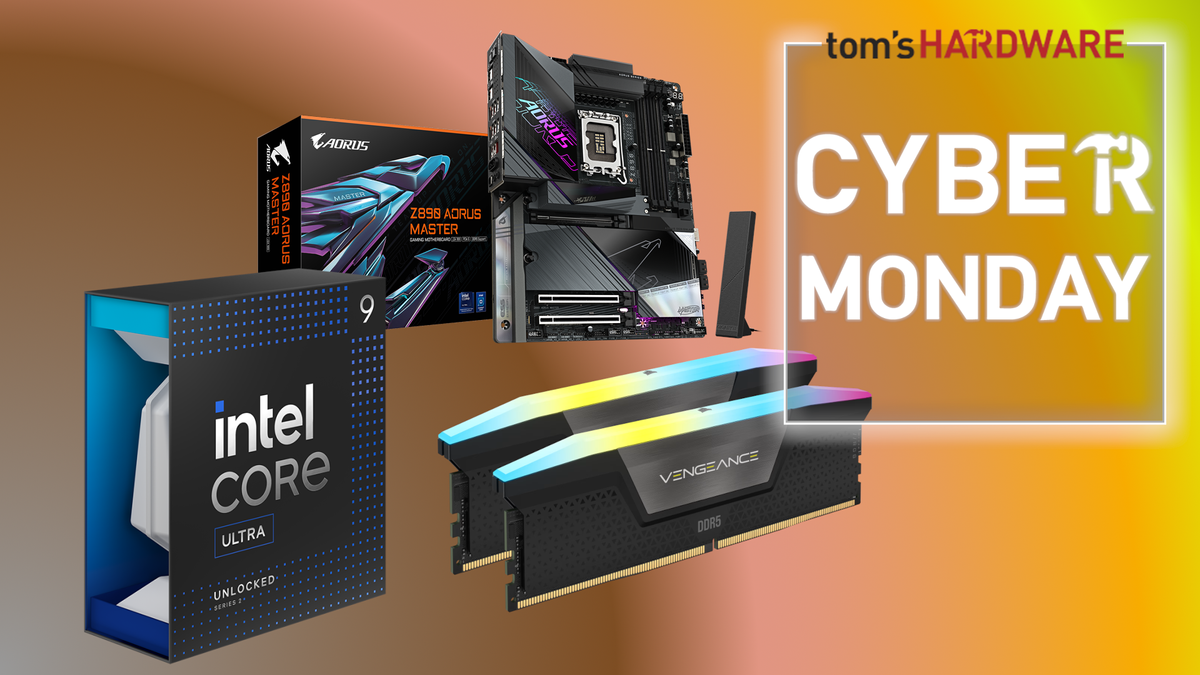


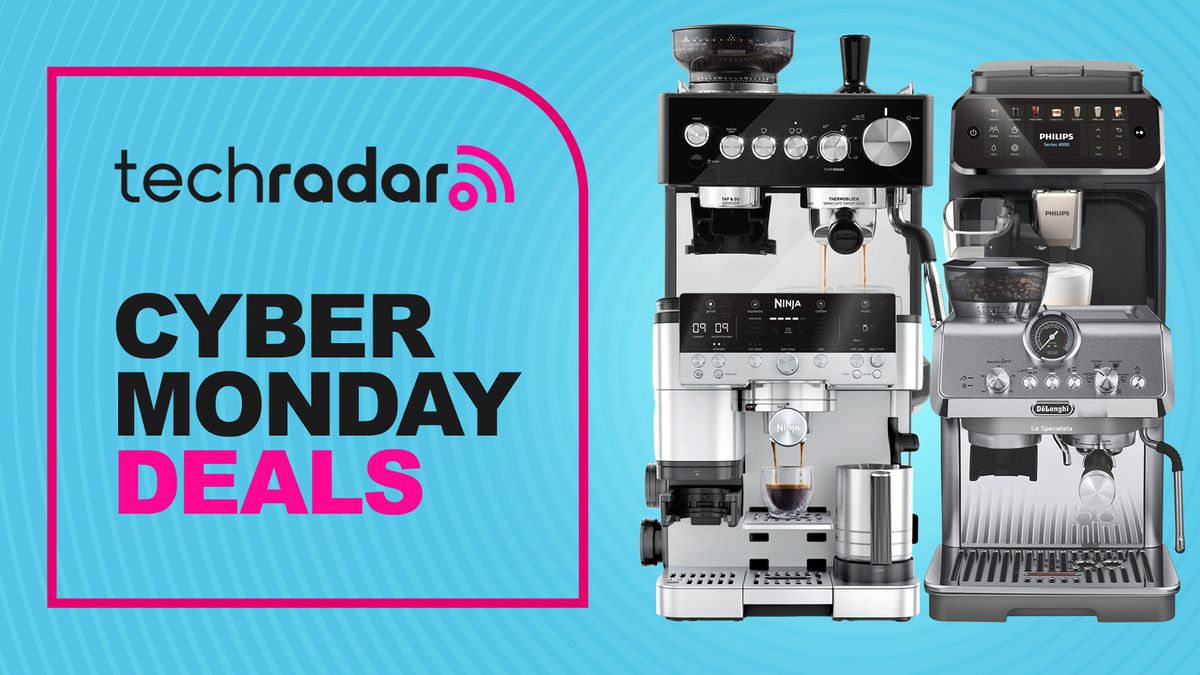
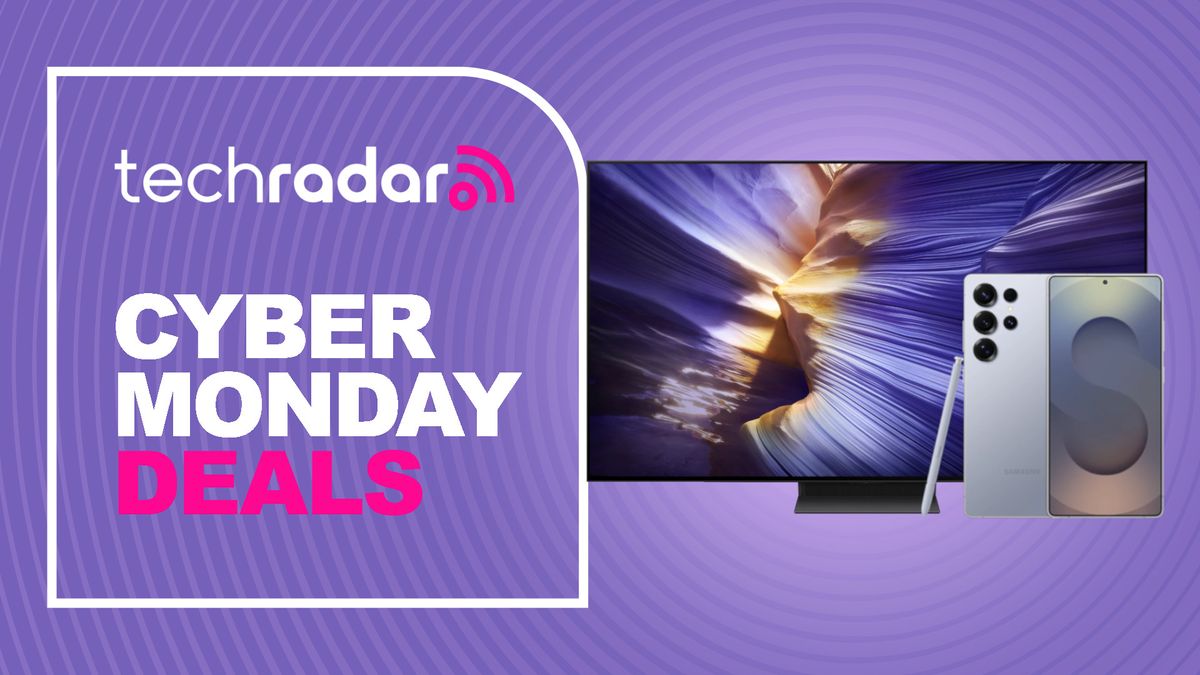
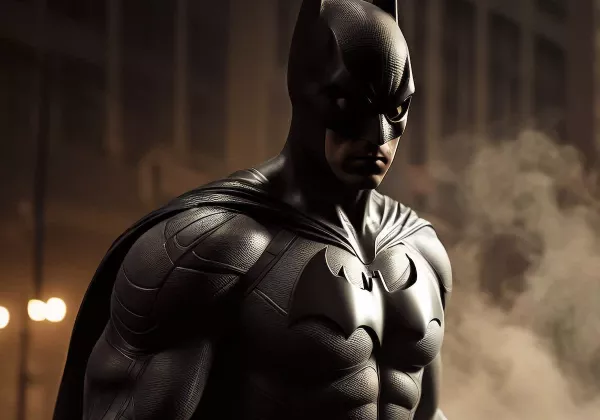
 English (US) ·
English (US) ·